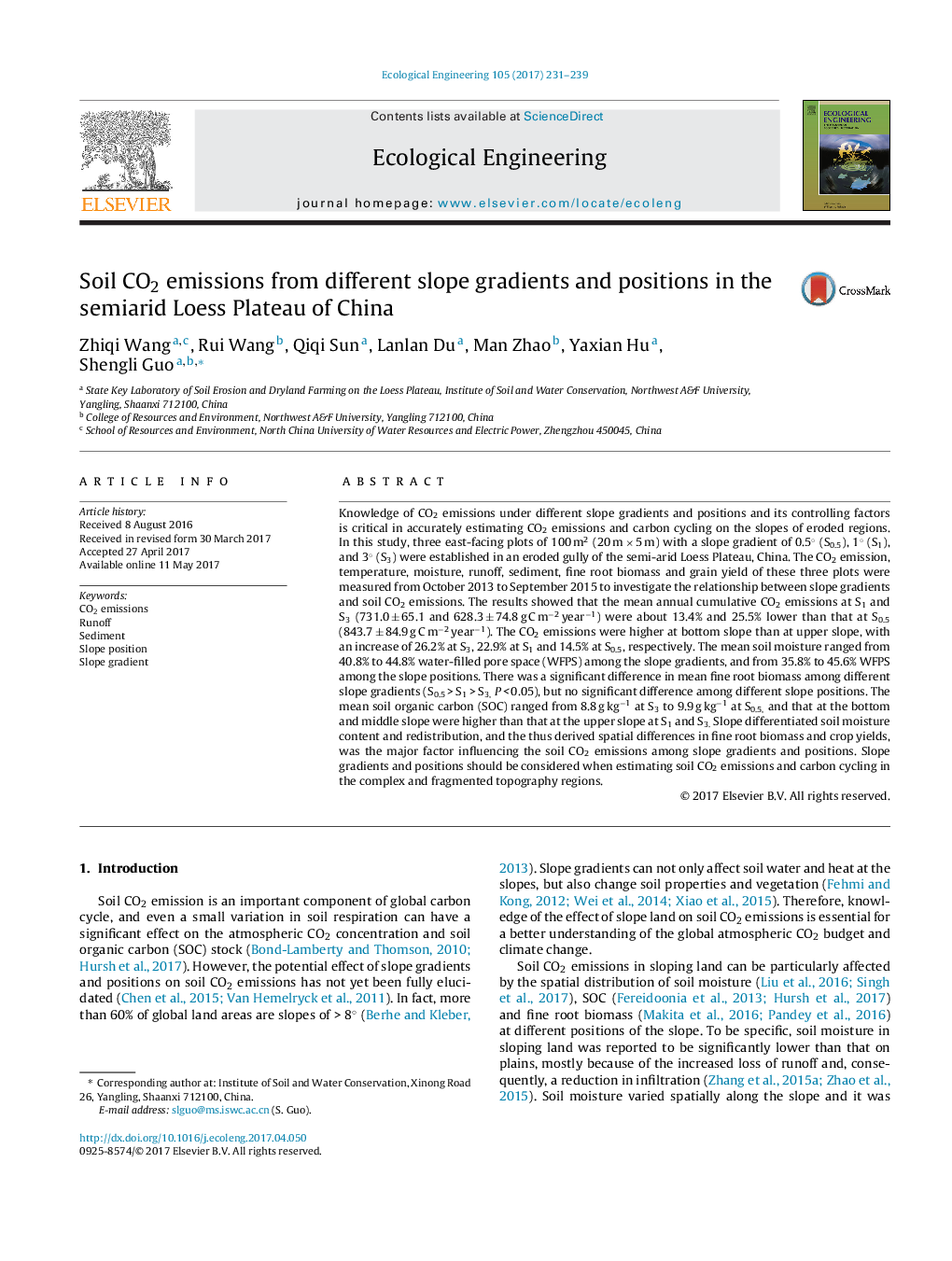| کد مقاله | کد نشریه | سال انتشار | مقاله انگلیسی | نسخه تمام متن |
|---|---|---|---|---|
| 5743617 | 1617996 | 2017 | 9 صفحه PDF | دانلود رایگان |
- The soil CO2 emissions significantly decreased with the increase of slope gradient.
- The soil CO2 emissions were greater at the upper slope than at the bottom slope.
- The erosion-induced spatial redistribution of soil moisture and SOC, and the thus derived differences in fine root biomass and crop yield, lead to the differences in soil CO2 emissions across different slope gradients and positions.
Knowledge of CO2 emissions under different slope gradients and positions and its controlling factors is critical in accurately estimating CO2 emissions and carbon cycling on the slopes of eroded regions. In this study, three east-facing plots of 100 m2 (20 m Ã 5 m) with a slope gradient of 0.5° (S0.5), 1° (S1), and 3° (S3) were established in an eroded gully of the semi-arid Loess Plateau, China. The CO2 emission, temperature, moisture, runoff, sediment, fine root biomass and grain yield of these three plots were measured from October 2013 to September 2015 to investigate the relationship between slope gradients and soil CO2 emissions. The results showed that the mean annual cumulative CO2 emissions at S1 and S3 (731.0 ± 65.1 and 628.3 ± 74.8 g C mâ2 yearâ1) were about 13.4% and 25.5% lower than that at S0.5 (843.7 ± 84.9 g C mâ2 yearâ1). The CO2 emissions were higher at bottom slope than at upper slope, with an increase of 26.2% at S3, 22.9% at S1 and 14.5% at S0.5, respectively. The mean soil moisture ranged from 40.8% to 44.8% water-filled pore space (WFPS) among the slope gradients, and from 35.8% to 45.6% WFPS among the slope positions. There was a significant difference in mean fine root biomass among different slope gradients (S0.5 > S1 > S3,P < 0.05), but no significant difference among different slope positions. The mean soil organic carbon (SOC) ranged from 8.8 g kgâ1 at S3 to 9.9 g kgâ1 at S0.5, and that at the bottom and middle slope were higher than that at the upper slope at S1 and S3. Slope differentiated soil moisture content and redistribution, and the thus derived spatial differences in fine root biomass and crop yields, was the major factor influencing the soil CO2 emissions among slope gradients and positions. Slope gradients and positions should be considered when estimating soil CO2 emissions and carbon cycling in the complex and fragmented topography regions.
121Dynamics of the CO2 emission rate (μmol mâ2 sâ1) from 2014 to 2015 in the plots with different gradients. Asterisks indicate significant differences at P < 0.05
Journal: Ecological Engineering - Volume 105, August 2017, Pages 231-239
